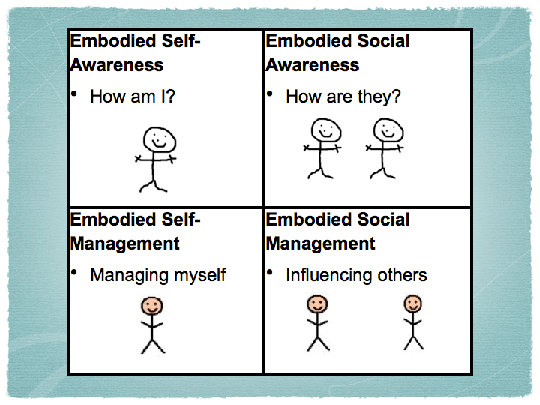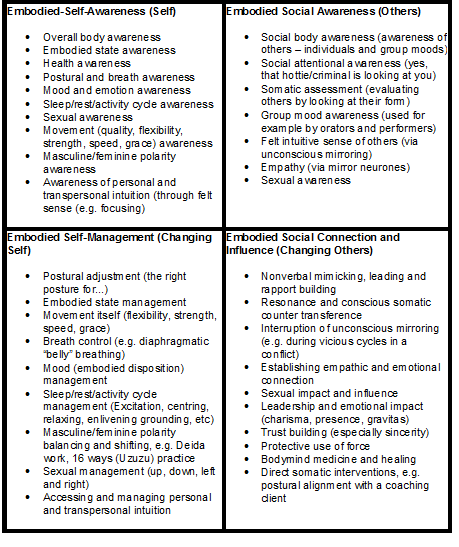Go read the whole article.Embodied Integral – The Body and Integral Theory
Integration Training are European specialists in embodied management training. If you would like to learn more about our training follow this link.
……..- An AQAL model of embodied, intelligence phenomena and practices
What is exactly is physical intelligence? What are some of the ways your body can be experienced, employed and developed? How do we make sense of the multitude of embodied practices now available to do this?
This paper is intended for those with at least a passing familiarity with Ken Wilber’s integral theory and interested in the body. In it I lay out some of the fundamentals of an integral theory of the body including the embodied intelligence line and how to develop it, challenge some of the integral orthodoxies in this area and show how the theory applies to some practical applications.
Fundamental elements of embodied “line” of development
We are all smart in different ways – this is the basis of multiple intelligence theory by Howard Gardner and the notion of “lines” or “streams” of development in Ken Wilber’s integral model. A line of embodied/somatic/bodymind or just physical intelligence is intuitive, but has not been mapped in the same way as IQ, emotional intelligence or values development has. Discussions of this line in heady integral circles are often reduced to saying certain sports stars have it, which for me misses the critical aspects of what it is to be “body-smart”. Athleticism is just one small slice of how the body can be a part of life.The following attempt to outline a more complete list of aspects of embodied intelligence is partly modelled on Daniel Goleman’s Emotional Intelligence. The quadrants below not to be confused with Wilber’s quadrants.
At the most basic level embodied intelligence involves being aware of and managing your own body, and being aware of and managing (influencing) others’ bodies. This gives us the following simple map of embodied intelligence:
Expanding upon this we can see there are actually many skills within each area:
Competence in a wide spectrum of these areas constitutes embodied intelligence. Each mentioned is progressive. Taking centring as an example from the self-management area – a toddler having a tantrum has little capacity to “get themselves together” and manage emotions and their embodied distress response but a martial arts master can do it under great pressure, quickly and effectively. The space between these two extremes constitutes development in this one aspect of embodied intelligence.
Offering multiple perspectives from many fields of human inquiry that may move all of us toward a more integrated understanding of who we are as conscious beings.
Thursday, March 03, 2011
Mark Walsh - Embodied Integral – The Body and Integral Theory
An excellent recent article from Mark Walsh - a leader in embodied integral training. This is a very useful article for those not well-grounded in integral theory, especially in an embodied version of it. The piece is long and is worth the time - check out this sample:
Tags:
Subscribe to:
Post Comments (Atom)


No comments:
Post a Comment